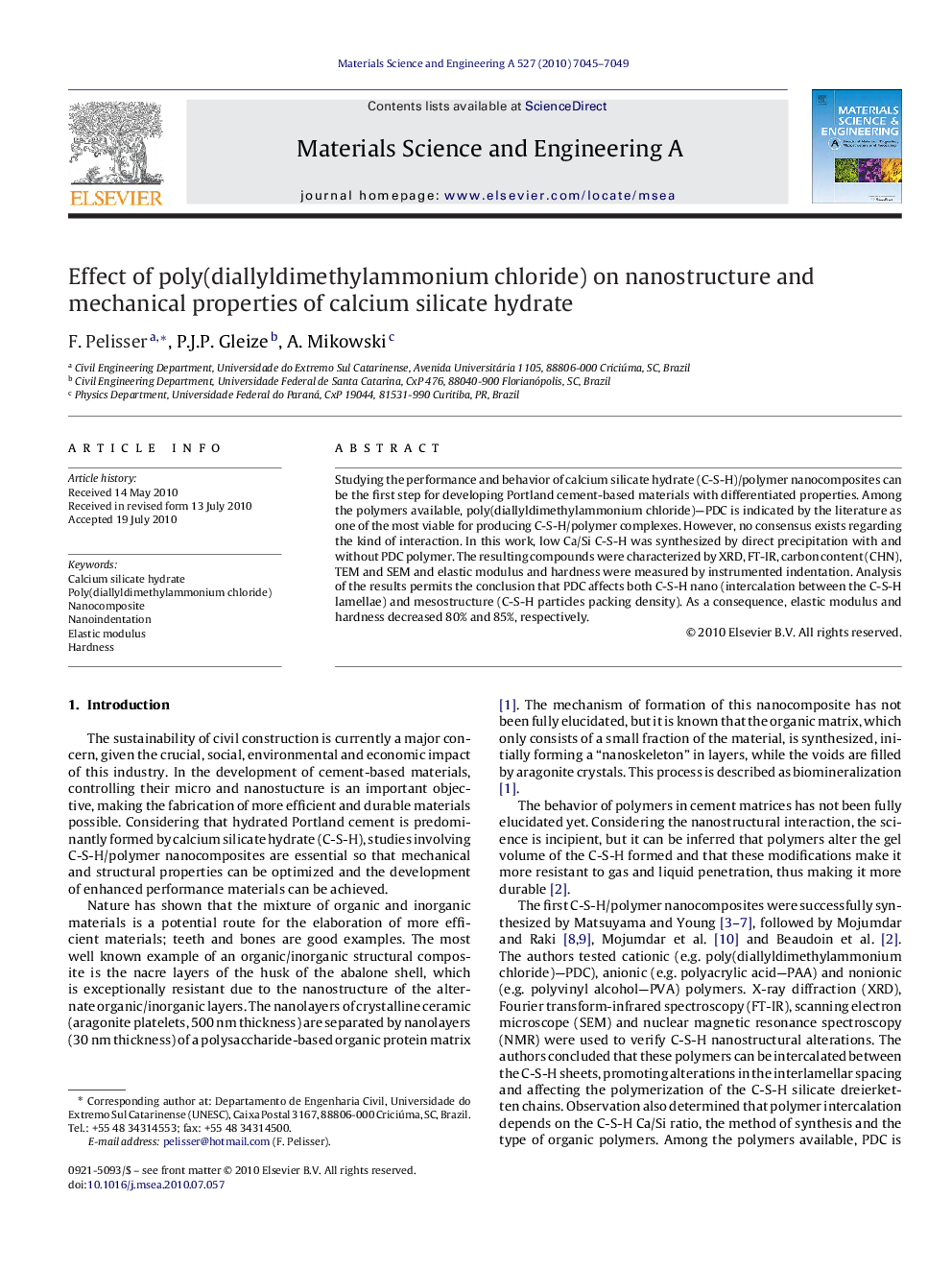| Article ID | Journal | Published Year | Pages | File Type |
|---|---|---|---|---|
| 1579882 | Materials Science and Engineering: A | 2010 | 5 Pages |
Studying the performance and behavior of calcium silicate hydrate (C-S-H)/polymer nanocomposites can be the first step for developing Portland cement-based materials with differentiated properties. Among the polymers available, poly(diallyldimethylammonium chloride)—PDC is indicated by the literature as one of the most viable for producing C-S-H/polymer complexes. However, no consensus exists regarding the kind of interaction. In this work, low Ca/Si C-S-H was synthesized by direct precipitation with and without PDC polymer. The resulting compounds were characterized by XRD, FT-IR, carbon content (CHN), TEM and SEM and elastic modulus and hardness were measured by instrumented indentation. Analysis of the results permits the conclusion that PDC affects both C-S-H nano (intercalation between the C-S-H lamellae) and mesostructure (C-S-H particles packing density). As a consequence, elastic modulus and hardness decreased 80% and 85%, respectively.
Graphical abstractFigure optionsDownload full-size imageDownload as PowerPoint slideResearch highlights▶ Study of C-S-H with organic polymers to produce nanocomposites. ▶ The poly(diallyldimethylammonium chloride)-PDC affects C-S-H nanostructure (intercalation and particles packing density). ▶ PDC promotes an accentuated elastic modulus and hardness decrease of C-S-H.
